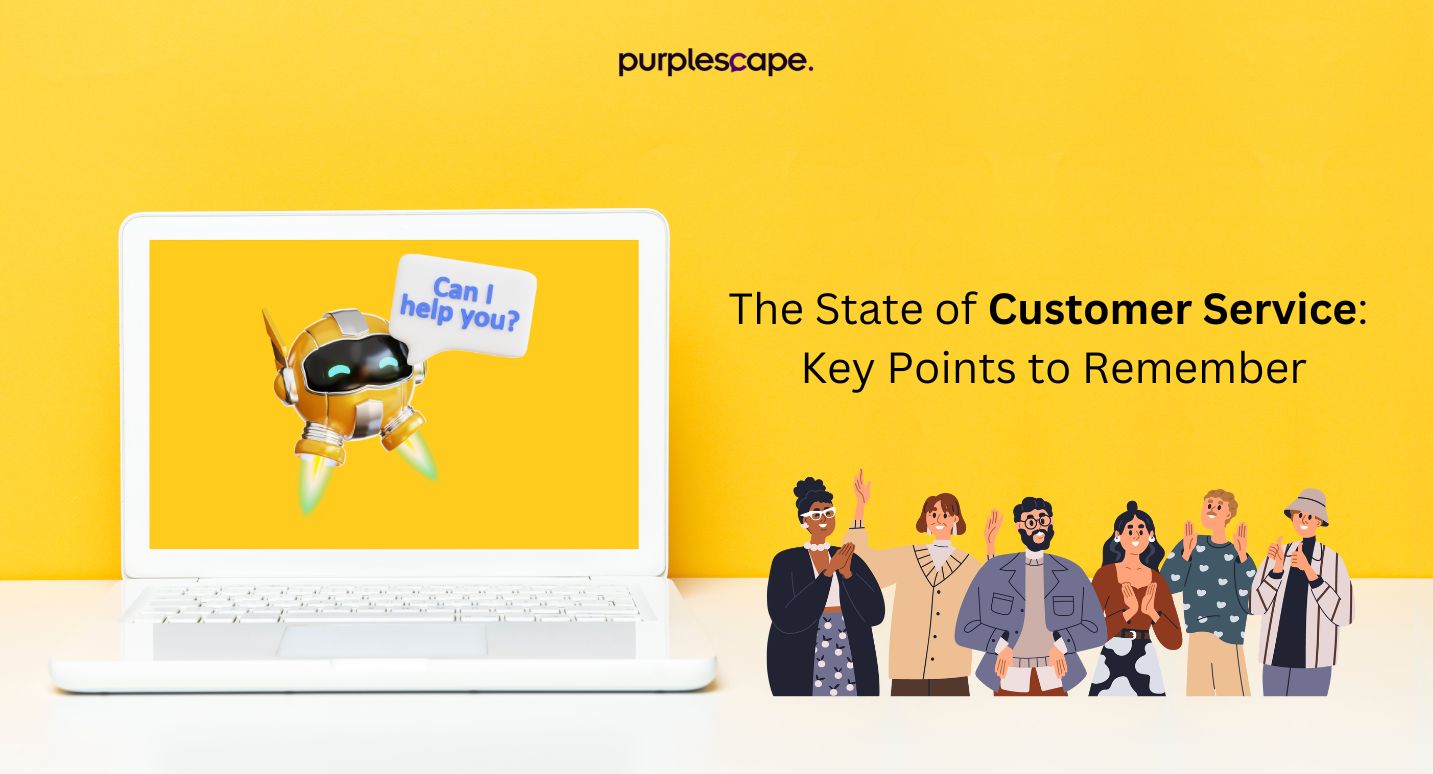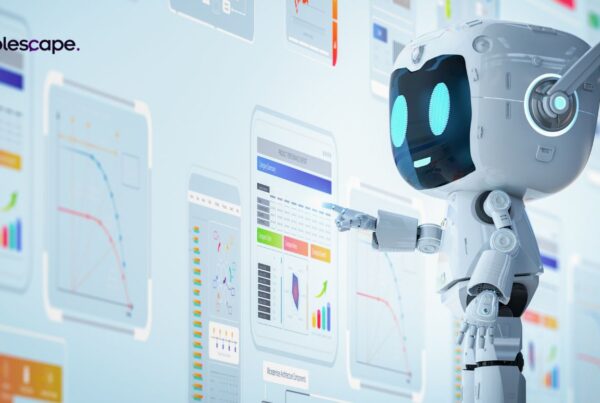
Introduction
Remember those days when life was simpler? Calling 1800 numbers and pressing a series of numbers according to the instruction provided by the IVR to reach the customer service agent on the other end. Little did you know that the agent was somebody sitting on the other end of the world in India trying to help you restart your OS after some reboot issues or helping you assemble that Lego set step by step.
Now times have changed. You see chatbots appearing on websites. You get your answers from the bots, and it guides you to the next step with a human agent stepping on to the foray as and when there’s a requirement. You are engulfed by the massive digitization happening around you at a scale that was unprecedented before.
The touchpoints are many. You take to social media to rant about how the AC service technician never came after you booked or leave a five-star rating for the phone you ordered from Amazon with detailed review on how it performs after using it for 3 months.
We are witnessing the next generation of the workforce entering the ecosystem who are touted as the first digital natives of this century, and record-breaking smartphone penetration ensuring connectivity for everyone anytime, anywhere.
In such unpredictable times, do you think customer service has redefined itself? Yes. Do Gen-Z turn to chat and text related channels to share their concerns with the customer service representatives? Not necessarily. Here’s the twist and boy it is an interesting one.
One Phone Call Away: Gen-Z and their Preferred Channel for Service Resolution
A recent McKinsey study revealed that Gen-Z weren’t averse to phone calls as common misconceptions put it. Almost 71% of Gen-Z prefer phones as a medium of issue redressal, especially from a premium brand perspective. We can sufficiently say that this looks like a “going back to the roots” kind of move, where the Grandparents (baby boomers) will be immensely proud of their younger generations sticking to a known value system when it comes to transactions.
But that doesn’t mean they ring up their friends and family for a casual chat. Their preferred means of general communication remains chat applications, but they understand the gravity of situations to rely on good Ol’ human intervention to solve their problems, especially after a purchase. This trend is evident with services like banking and telecommunications, where they tend to get on the phone and sort it out instead of depending on the chatbot to resolve their problem.
In simple terms, we can summarize as Vox Populi, Vox Dei for Customer Service Representatives especially with Gen-Z customers.

Source: McKinsey, Where is Customer Care in 2024?
Another interesting statistic is the relevance of email communication in such a foray. Almost 75% of the Gen-Z prefer using emails as opposed to customer service leaders who want to disassociate themselves from emails as a channel in the long run. The reason this is an interesting take is because customer service, especially in the era of Gen-Z takeover is expected to be real-time and instant as opposed to emails, which has a time delay for the representative to read, assimilate, act, and respond. However, Email remains a preferred channel because of the asynchronous nature appeals to Gen-Z followed by the convenience to send emails anytime.
Given all these preferences of Gen-Z where they mirror Gen-X and, does Generative AI hold water? Or are people jumping the bandwagon along with their compatriots without expecting real value.
Future-Proofing Customer Service with AI-Ready Systems
We can safely say that we have been part of a Gen AI world for the past 20 months or more. Customer expectations have evolved from the pandemic era, where just being present for issue redressal was enough. Now the expectations have gone back to the fundamentals providing effective solutions and personalized engagement without losing context is table stakes.
The opportunities of Generative AI in these areas are phenomenal, especially to augment the existing customer service operations. Given the shift in customer service objectives evolving from simple issue resolution to aggressive revenue targets, automating routine enquiries with AI is the only way forward. A key point to note is that humans are social beings with very personal attributes. A task as simple as resetting a password might require the need to be approached differently with different people as their objectives for it can be different.
Generative AI is the obvious star here with its ability to crunch unstructured text or speech and engage in an impromptu conversation within the ambit of its training data. Leveraging LLMs to create such experiences has indeed been a triggering factor for many organizations, especially in the service sector like banking for example to adopt this technology. Generative AI bots can play to make customer service more seamless and approachable. A fresh breath in terms of issue resolution for the customers instead of their usual experience with rule-based chatbots that tend to break at the slightest deviation from their trained dialogues.
We have established the need for Generative AI systems to be integrated into the existing customer service workflows. There are three roles that Generative AI can play to enhance customer experience.
Avatar-1: Voice Bots and Virtual Assistants
Currently, we see leaders aiming high, aspiring to automate more than 60 percent of voice interactions – McKinsey
The need for quality interaction is going to be omnipresent and the upcoming Gen-Z workforce tends to rely more on the phone for resolving quite “serious” issues. The ability of Gen AI powered voice bots and virtual assistants to help customers with their problem can be a great way to ensure the bulk of mundane transactional queries are moved away from customer service experts for them to concentrate on more value-add tasks that can foster brand loyalty and cross-sell to increase revenue generation.
Avatar-2: Agent Assist Tools
79% of customer service professionals say AI/automation tools are important to their overall strategy – Hubspot
The ability of a tool to truly be a partner to customer service experts is dependent on how much it can help to improve key metrics like CSAT scores or achieve revenue goals. It is not just limited to being in a front-facing role like an assistant’s. A well-rounded agent assist tool helps in summarizing key information from previous conversations to help the CS expert with the context of the issue. It also goes beyond the traditional roles to fetch relevant insights by scanning huge documents or scraping intranet pages regarding policy to equip the CS with the right information.
Avatar-3: AI Powered Voice Analytics
The Speech Analytics Market size is expected to reach USD 6.47 billion by 2029, growing at a CAGR of 15.61% during the forecast period (2024-2029) – Mordor Intelligence
Understanding the sentiment behind a conversation makes a difference in building a CX strategy. So, insights from customer conversations can be used effectively for resolving their queries and going the extra mile to ensure customer retention. As statistics point out, retaining a customer is cheaper than acquiring new customers. Ensuring customer conversations are analyzed can also throw light into additional information such as the motivation to buy a product or get a service.
But adopting a Generative AI system for your customer service efforts isn’t without its challenges with the topmost being scalability. Leaders are visibly concerned about scaling the system from pilot to full production followed with safety, security, measuring desired outcomes, and more. However, that’s a story for another time.
Now that we’ve put your doubts of Generative AI’s place in the modern customer service successfully to rest, we must discuss the best channel to address customer concerns. Is it phone or voice or text? Or a combination of these? Should customer service be an omnichannel approach?
Omnichannel or Optichannel – Which Approach Impacts Customer Service the Most?
Optichannel is the ideology where you connect with your customers on a channel that is ideal for them. To zero in on a channel based on customer preferences at the moment takes an advanced level of understanding customer behavior and buying patterns.
Optichannel will try to focus on improving the quality of conversation and its effectiveness in select channels is at the core of optichannel engagement. For example, if a lot of your requests are about how to change the oil filter in their vehicle, then a simple FAQ page with a step-by-step instruction would do the trick instead of a highly trained bot for two reasons: –
- The customers are trying to solve the problems themselves with minimal to no help
- The customers are not interested in investing a lot of time for a very basic task
Thus, understanding customer requirements in a deeper sense is very important to have an optichannel approach.
Omnichannel on the other hand focuses on ensuring consistent contextual conversations across different channels be it social media or a Gen AI bot. The above example on an omnichannel approach would play out differently with every channel giving the same step-by-step instruction on how to change the oil filter. The Gen AI bots can make it more interactive with specific nudges, but at the end of the day – was the information shared in an optimized channel?
In the dynamic world of customer service, one cannot come to a simple conclusion about the omnichannel vs optichannel approach without weighing in on the requirements and the issue at hand. However, both approaches can be integrated with Generative AI at specific levels, and that discretion is in the hands of customer service leaders and innovators like you. Factor into your conclusion that customer service is a sector continuously disrupted by technological advancements and plan your approach keeping the next decade in mind.
ParrotGPT – A Perfect Companion for Customer Service Experts
Now that you’ve got a clear understanding of the customer expectations for 2024, it’s important to consider the right solution that learns, evolves, and becomes better as customer service goes into the next step. Here’s where ParrotGPT comes into the picture with its features that make it the perfect companion for customer service experts of the decade.
- Contextual Understanding: ParrotGPT bots have the inbuilt capabilities to learn from their previous interactions. They can engage in a contextual conversation with their customers across channels or in select channels based on the organization’s preference.
- Generative Capabilities: ParrotGPT will never leave the customer hanging in a conversation. It can provide the required information in the format requested by the customer.
- Intuitive Handshake: There will be many scenarios where human intervention will be required. ParrotGPT is intuitively trained to “read the room” and handover the conversation to its human counterpart as and when the situation arises to ensure better issue redressal.
- Empathetic Responses: No two humans are the same and no two ParrotGPT bots deployed are the same. ParrotGPT is intelligent enough to understand the emotions driving a conversation with its heightened awareness for sentiment analysis and tailor a response.
- Revenue Generation Opportunities: As sugar is to tea, the world is filled with complimentary products and services that ParrotGPT can effectively upsell and cross-sell to the customers driving better revenue generation and helping customer service experts close their quotas.
- Augmenting Responses: Amidst resolving issues, it is quite difficult for the customer service expert to browse through 1000-page documents and respond to company policy related questions. ParrotGPT is efficient enough to ingest heavy documents and help agents with the responses. Additionally, it can also summarize the conversation that happened so far for quick understanding of the issue by the customer service expert.
- Guided Actions: ParrotGPT is an expert guide for customers when it comes to any action. Be it assembling a product ordered online or a step-by-step approach to complete transactions, ParrotGPT ensures the customer can complete their action with minimal to no human intervention.
- Agnostic Deployment: ParrotGPT can be deployed on any LLMs be it private or public in different avatars, even as a voice bot to automate telephonic conversations without losing the “human” touch.
The features that make ParrotGPT attractive to customer service experts are endless. Check out this webinar to see how ParrotGPT helps automate customer service interactions with ease.
Watch the above video: Achieving True Customer Delight with Generative Chatbots




